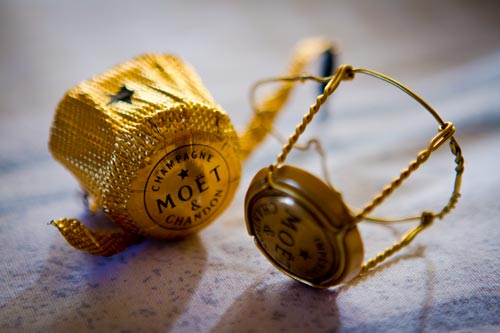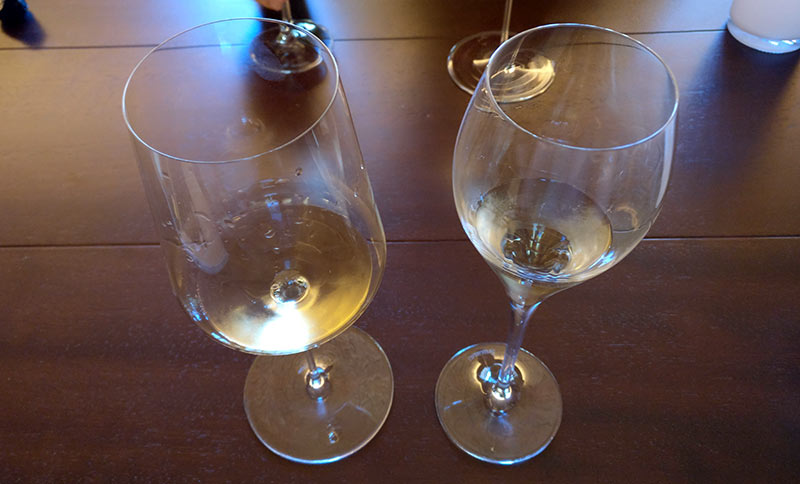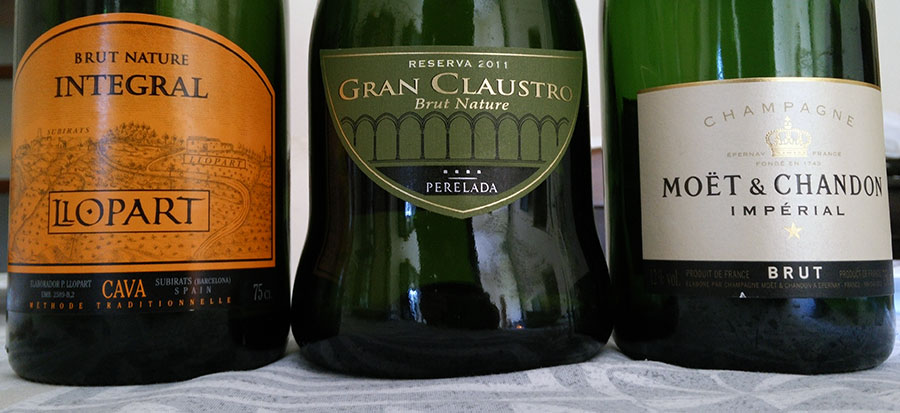
Based upon the history of Champagne, one could argue that it is nothing more than the result of red wine attempting to be produced in the wrong climate and now drank because everyone wants to pretend that they’re royalty. Obviously, that argument isn’t going to win any friends, least of which my sister-in-law who loves the bubbly wines, especially when they’re of a pink, Rosé nature.
I’ll state right now that sparkling wines are not my first choice in aged grape juice, whether they be Champagne, Prosecco, Cava, Californian, or any of the others. Of course, as this is the middle of the holidays, if a glass is offered, to a be a proper guest, you drink it. Thankfully, my in-laws opt for Moët & Chandon, which is one of the few “affordable” Champagnes that I find quaffable, although it still clocks in at 32€+ a bottle. The only other I find I enjoy is the Sofia from Niebaum-Coppola Rubicon Inglenook (really?) and that’s most likely due to its blend of Pinot Blanc, Riesling, and Muscat which is decidedly not the brash Chardonnay base that goes in to a bottle of most sparkling wines.
Many people I encounter the day after a wedding or some other fancy special occasion where the bubbles were broken out en masse, are usually lamenting the hangover they’ve received from said wine. Admittedly, they probably had too much, but at the same time, there seems to be a never-ending plague of truly crappy sparkling wines out there and that helps to play in to anyone’s possible aversion to it. For many producers, you get the feeling that the carbonation seems to be an excuse to toss whatever might be left after bottling single varietals in to the sparkling because well, you can’t really taste it that well anyways…
So, why drink this type of wine? I mean, it’s true that it’s really the only wine that my mother in-law will drink, but she doesn’t like strong flavors in anything, so is that to say that sparkling wine is bland and thus appeals to anyone? I don’t think so. I would agree with a certain aspect of this article though which surmises that it started as a bit of a “thing” in the later 18th century wherein the nobility would suck it down with great delight, but the commoners couldn’t really get at it due to limited supply and thus excessive price.
Is that really what it comes down to? On New Year’s Eve, we’re really all just wanting to salute another pass around the sun with a tiny piece of aristocracy that we can all roll across our palates? It would seem so and it would also seem that this is unlikely to change.
While there’s no way that any other wine will ever replace the bubble-effect one gets with these wines, if you’re looking for a wine that most in the crowd will enjoy, but doesn’t evoke allusions to Robin Leach and his wicked waistline, give French Chenin Blanc or Catalan Garnatxa Blanca a try. Just make sure that they’re not barrel-aged as when they only come from stainless steel tanks, they can be quite mellow and take away most anyone’s right to be pissed off about the wine on offer. If you’re feeling daring on the the red end, give French Mouvèdre, California Merlot (yes that Merlot), Oregon Pinot Noir, or Spanish/Californian Carignane a try. Again, make sure that it receives little to no oak aging.
Short of that, pop open a tall boy, pour it in a glass, and tell everyone to shut up one minute before midnight as all will have to be forgiven just 60 seconds later.


